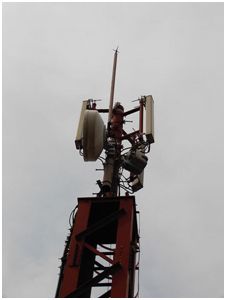Cognitive devices are able to evaluate the electromagnetic spectrum availability, finding the unused regions of this spectrum (known as “white spaces”) to transmit information. Geo-location databases are a practical solution to offer monitoring capabilities, and have been recently chosen as the primary tool by the FCC.

pectrum monitoring techniques are required for the cognitive devices use the available spectrum for communication purposes. This communication will be also parameterized on the basis of the solution selected. Cognitive devices have mainly three options in order to determine if a channel is already busy due to another service: spectral sensing, listening for beacons if available and geo-referenced databases. The main problem of the former strategy is the “hidden terminal”. This problem appears when a cognitive device detects a free channel which in fact is under use, although the location of the primary transmitter is such that it goes unnoticed.
The use of geo-location databases seems to be preferred, at least for the current state of the technology. The cognitive device accesses a database to learn which frequencies can be used in its current location and how much power can be used. Geo-location databases need several parameters (like transmitted power, type and height of the antenna, emitter’s working frequency, …) to make their calculations. However, they don’t need terrain information, because its prediction models are based on theoretical ones, which make the computations easier. All this will allow to establish variable protection ratios which will maximize the spectrum use. Nevertheless, this option is not exempt of some problems related to synchronization with other databases, updating, management and precision in the location of the cognitive device.
A strategy based on a geo-location database usually makes more effective use of the spectrum due to the continue amount of information coming from the cognitive devices regarding the spectrum availability. Proof of this is the selection of this method by the United States for the allocation of white spaces, supported by data provided by FCC (Federal Communications Commission). The development and definition of this solution was supported by a public contest. In Europe, on the other hand, the operation and structure of the database is not defined yet, but there are recent proposals from the European ECC (Electronic Communications Committee) which defend a solution based on both sensing and databases combined, taking the advantages from both worlds. Gradiant is working currently on the analysis and definition of a geo-location database as part of a more extensive cognitive radio study to try to improve the efficiency in the use of the spectrum.


